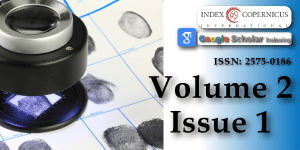Correlate alcohol and toxicology analysis with Urinary Bladder Distension on Post-mortem Computed Tomography (PMCT): A Validation Study
Main Article Content
Abstract
Urinary bladder distension is traditionally regarded as a sign of intoxication at autopsy, however, to date there is very little literature available to support this hypothesis. The purposes of our study were to correlate alcohol and/or toxicological analysis with calculated urinary bladder volumes and its sensitivity as well as to test the validity by using the radiologically calculated urinary bladder volumes (UBVs) from CT images. The study population was all the postmortem cases involving with blood and/or urine samples sent for alcohol and/or toxicology analysis in 2016 at the Kuala Lumpur Hospital. Out of that 485 cases, there were 127 postmortem cases retrieved with positive alcohol and/or toxicology results Positive toxicology results in this study was referring to drug of abuse (DoA) including amphetamine type stimulants, opiates, cannabis and ketamine. Urinary bladder volume (UBV) was calculated based on the equation used in ultrasonographic volumetry, V=axbxcx 0.5. These 3 parameters correlated well with the UBV and having a strong positive relationship. There was a significant positive correlation at low strength between alcohol concentrations with calculated UBV. There was statistical significant correlation between urinary bladder distension on postmortem CT and cases of intoxication especially more corresponding for positive alcohol detection. The average sensitivity was 35.65% whereby it was slightly lower than those reported in Rohner C, et al. In this study we have deduced that diuretics effect of alcohol was the main reason causing bigger urinary bladder or UBV and was more prominent than the influence of drug of abuse on the urinary bladder sphincter. The distension of urinary bladder should raise suspicion of intoxication, but would not provide information on the quantity of the intoxicating agent due to its significant but poor correlation. It was important to note that intoxication may also be present in cases with low urinary bladder volume. In conclusion, it is vital to consider circumstantial evidence, as well as the presence of additional findings on imaging before suggesting the diagnosis of intoxication based on urinary bladder distension on imaging. Currently, the use of CT bladder imaging should serve as a strong indication that the individual may be intoxicated but should be confirmed by a complete autopsy and a detailed toxicological analysis.
Article Details
Copyright (c) 2018 Soon LP, et al.

This work is licensed under a Creative Commons Attribution 4.0 International License.
Aghayev E, Jackowski C, Christe A, Thali MJ. Radiopaque stomach contents in postmortem CT in suicidal oral medication intoxication: report of three cases. J Forensic Leg Med. 2010; 17: 164-168. Ref.: https://goo.gl/CnM9eb
Uchigasaki S, Lach H, Oesterhelweg L, Sperhake JR, Puschel K, et al. Postmortem measurement of the urine volume by ultrasonography. Rechtsmedizin. 2003; 13: 371-374.
Rohner C, Franckenberg S, Schwendener N, Oestreich A, Kraemer T, et al. New evidence for old lore-Urinary bladder distension on post-mortem computed tomography is related to intoxication. Forensic Sci Int. 2013; 225: 48-52. Ref.: https://goo.gl/1EFyvT
Hofer M. Ultrasound Teaching Manual: The Basics of Performing and Interpreting Ultrasound Scans. Thieme Stuttgart. 2000; 35: 81-82. Ref.: https://goo.gl/hqfA8j

